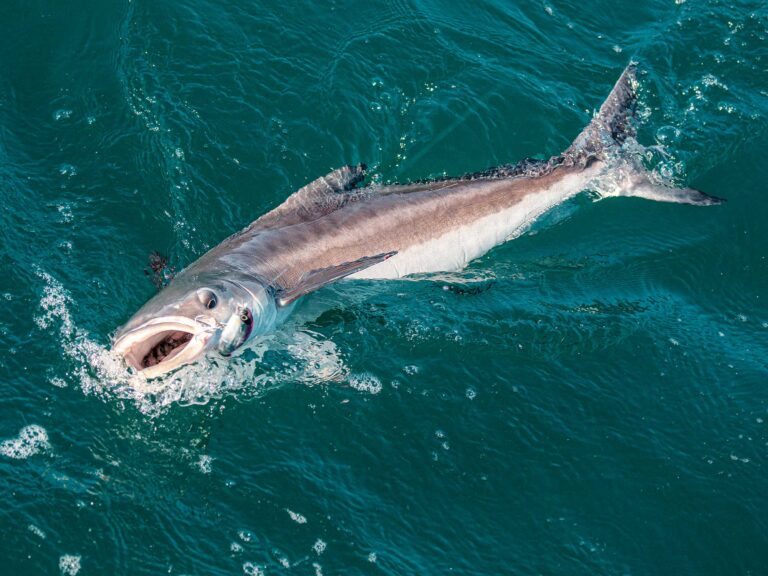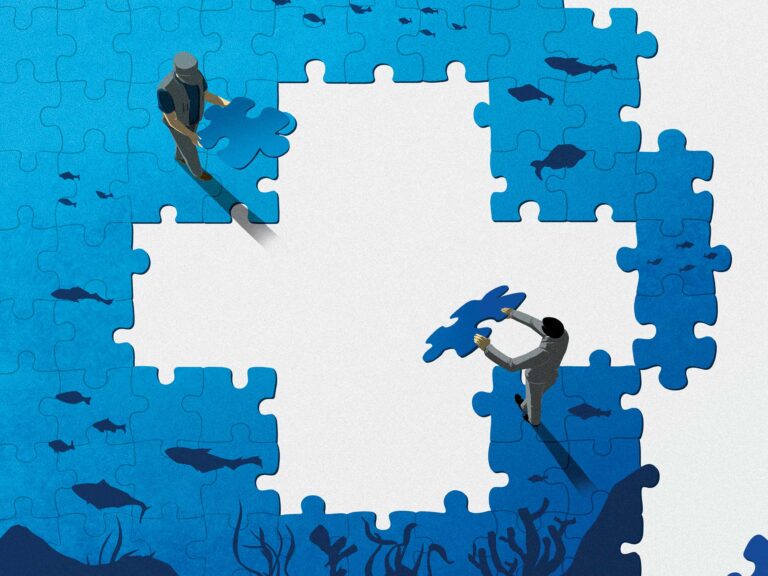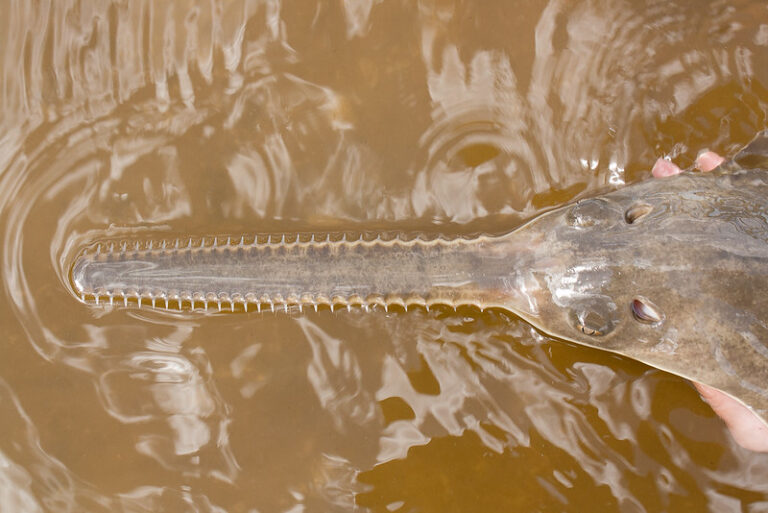
WINTER LOW TIDES
It was mid-January, and, aside from the chill, winter had brought the lowest tides of the year, a season-long occurrence throughout the Gulf Coast that forces inshore game fish to relocate and anglers to scramble to find them. The weak incoming tide that morning was no match for the stiff north wind holding the water back. But after trying two other spots unsuccessfully, we caught a couple of upper-slot redfish, that 4-pound trout and several other healthy ones working the outskirts of a grass flat that held 2 feet of water when the adjacent shallows were barely ankle-deep.
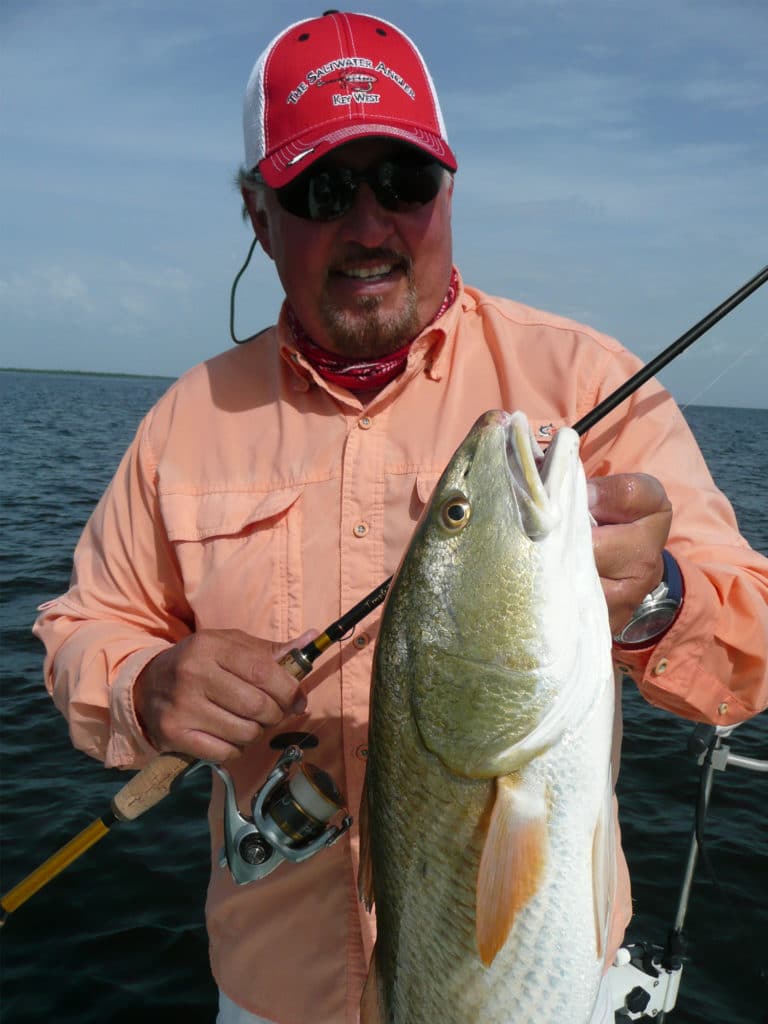
TRIED AND TRUE
After playing that winter hide-and-seek game for many seasons, I’ve learned to look for inshore species in the nearest spots that satisfy their essential needs for food and shelter when their usual lairs are devoid of water. For instance, bull redfish tend to gather in sheltered coves and shorelines with immediate deep-water access, while large speckled trout and snook often lurk in potholes and troughs. Here are the basics to locate and target inshore game fish during winter’s extreme low water conditions.

TIDE PREDICTIONS
Studying tide tables is a good start, but look beyond the times when highs and lows occur. Their heights are also important. In winter, during new and full-moon periods, low tides are at their lowest and often fall below the average low waterline. Those are called negative tides and are depicted on tide tables with a minus sign (“-0.6 feet,” for example). But you must also account for the effect of the wind, which may push in or blow out a considerable amount of water.

TEMP-DEPTH RELATION
When a cold front moves in, the shallowest water chills faster. As water levels drop, fish and their forage move from shallow shorelines and marshes to deeper troughs and potholes before funneling into nearby creeks, bayous or channels to stay ahead of the receding water and falling temperatures

AFTER A FRONT
On the backside of a front, when clear, sunny skies prevail, inshore species leave those deeper areas in favor of sandy potholes where they can soak up some rays, or muddy or dark, hard bottoms — like rocks and oyster quickly. But the water temperature must rise close to their comfort range before flounder, trout, redfish or snook make the move.
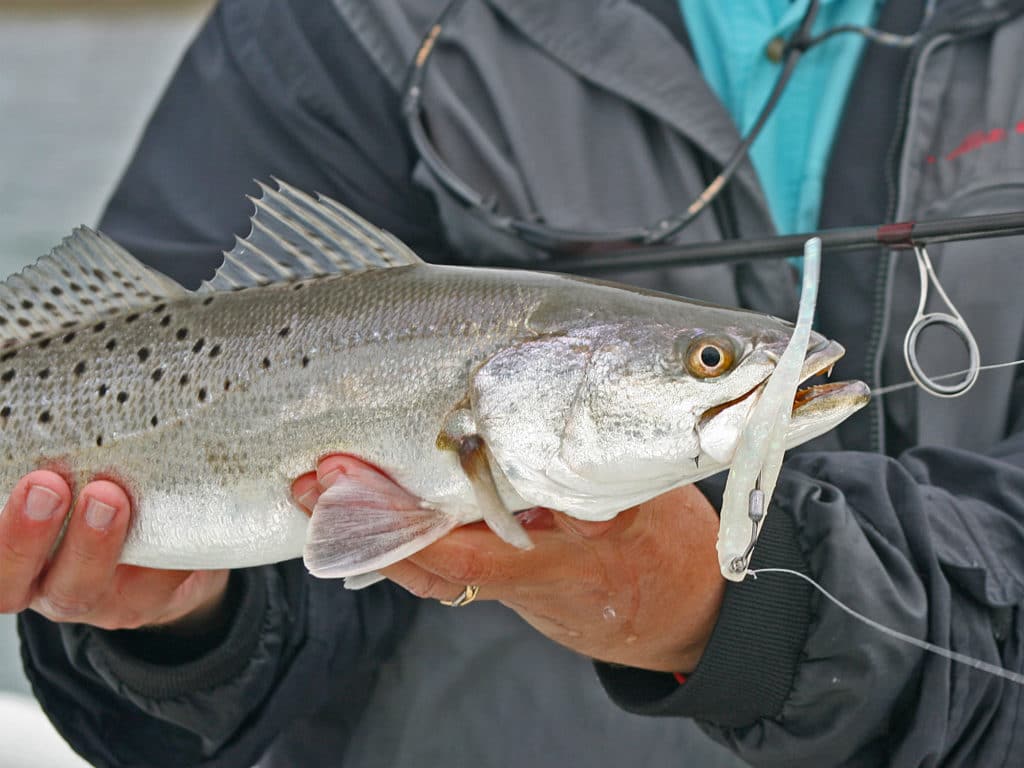
GAUGE TEMPERATURE
The sun and an incoming tide both raise the temperature of the water in the shallows. The sun does it faster, heating up the water and the bottom below it. However, in the morning and during cloudy periods, an incoming tide is likely to have a more immediate warming effect.
In the winter, a 2-degree change in water temperature makes a world of difference, especially when the temperature nears the lowest tolerance of your target species. A temperature gauge or a simple thermometer allows you to detect those small temperature changes and decide between similar fishing spots, quickly narrowing your search.

AVAILABLE FORAGE
Most baitfish and crustaceans retreat when the water and the temperature drop, gathering in the deeper part of a bay, the main channel of a creek or bayou, or in a nearby canal. So that’s where you’ll find the game fish that prey on them.
Wading birds often mean shrimp or small minnows are present. They’re also evidence that the water is too low to be productive. You don’t find many fish until the water rises enough for mullet and schooling baitfish to move in, which in winter could take an additional foot of water or more.

MIND THE WIND
As mentioned earlier, wind can stack up or blow out the water, turning certain places productive at low tide and rendering others unfishable when the tide table points otherwise. And in winter, a stiff breeze also brings down the water temperature. So when the sun is out, fish transition out of deeper water and return to the shallows considerably sooner in the lee side of islands and in sheltered coves and ponds.
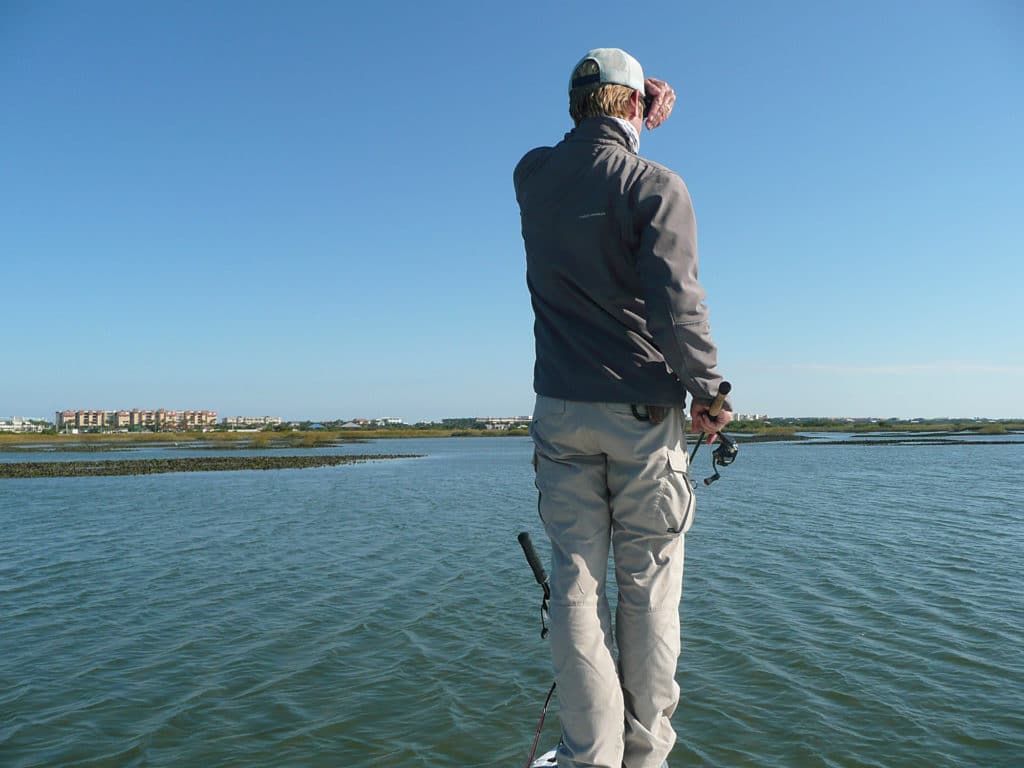
THE APPROACH
A stealthy approach and long casts represent a real advantage in most shallow-water situations, but they’re even more critical when extremely low water levels force the fish to stage away from their comfortable settings. Pole or use your trolling motor at low speed as you look for likely spots and structure to fish. If you have neither, use a drift sock or fashion one out of a 5-gallon bucket to slow your drift and control its direction as you cover an area. Power-Pole down or stake-out every time you see a potential fish hangout and fan cast until you’ve covered the spot thoroughly before moving on.
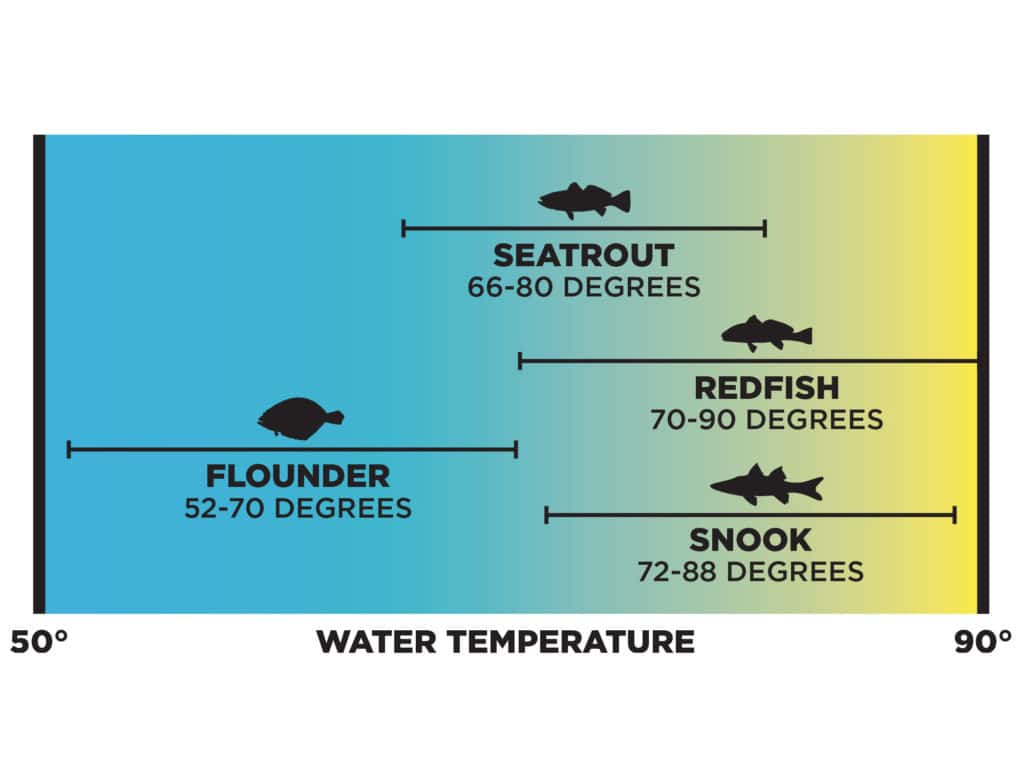

HIGH PERCENTAGE LOW-WATER SPOTS
As water levels recede severely during the winter, baitfish and crustaceans funnel to deeper areas near their usual hangouts. Meanwhile, inshore game fish, like redfish, seatrout, flounder and snook, seek out the closest locations that satisfy their basic need for suitable temperatures, moving water and sufficient forage. Spots that offer the best combination of those three factors are most likely to produce, given the angler uses the appropriate lures and tactics for each specific situation.

TROUGHS AND POTHOLES
The first move fish make when the water level drops is to a nearby trough. These narrow runways — a foot or more deeper than the nearest shore — lie along oyster bars, islands and marsh shorelines on the side battered by waves or a strong current. As the water in the shallows falls, nearby potholes (sand or mud holes devoid of vegetation and slightly deeper than their surroundings) are the first stop for fish forced to leave their normal lairs along shorelines and open flats.

OYSTER BARS
As the sun beats down on exposed oyster bars, the surrounding water warms up quickly, attracting baitfish, crustaceans and game fish.
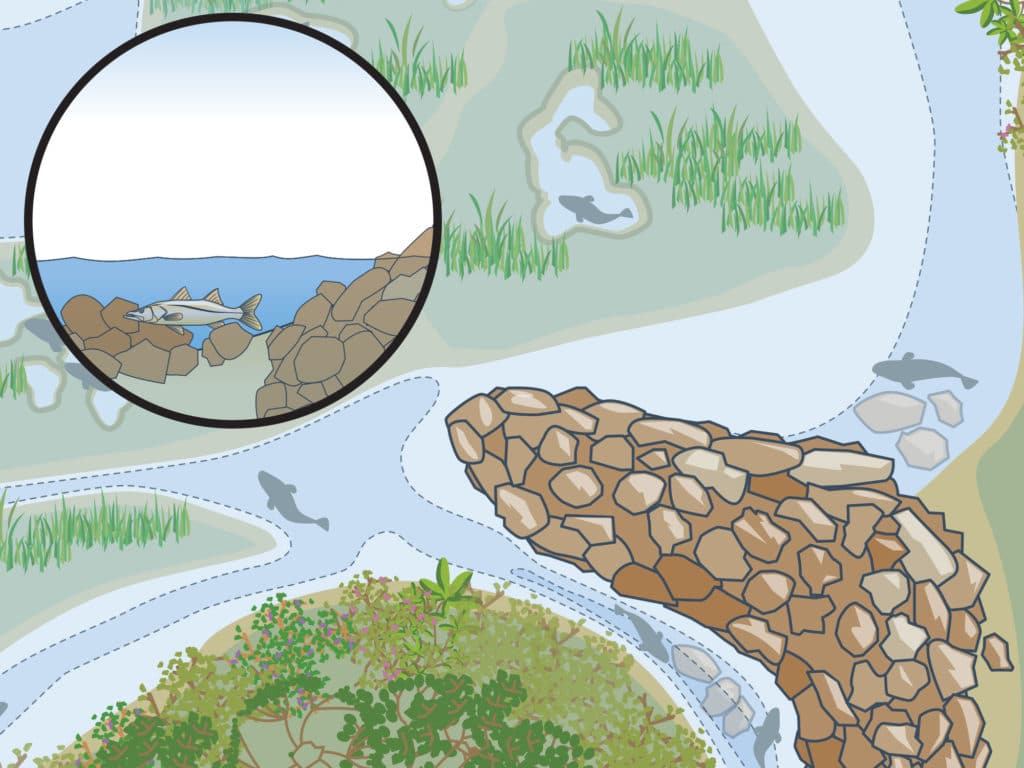
SCATTERED ROCKS
If rock jetties and riprap that hold fish are left high and dry, scattered rocks in a nearby creek or channel become a good option.

FALLEN TIMBER
When mangrove roots and fallen trees are out of the water, the few limbs and stumps that remain submerged still hold fish.

DOCKS AND PIERS
Fish that seek food and shelter under docks or piers often move to the very end of the structures during low-water periods.
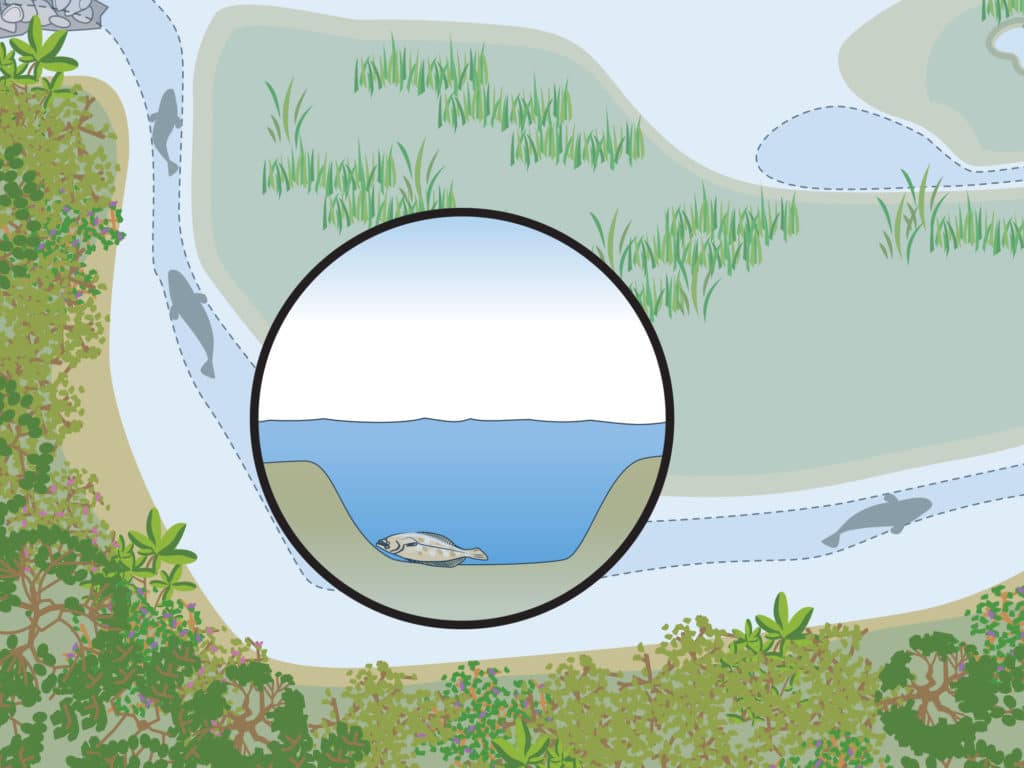
CHANNELS AND DEEP BOWLS
Once the water gets too low to hang out in potholes, deeper shorelines and troughs, fish retreat further and drop into channels. Some bays, however, have large holes or ledges where the depth suddenly drops a couple of feet or more. Bait gathers in these deeper areas, and game fish — sometimes entire schools of redfish or trout — lie on the bottom or suspend in the milder lower part of the water column.

CREEKS AND BAYOUS
In most bays and marshes, creeks and bayous generally contain the deepest water; therefore, the majority of fish end up there when the surrounding flats and finger creeks dry up. They’re often narrow and have some current, so drifting is out of the question and poling can be difficult if they are more than 4 or 5 feet deep. So use your trolling motor at low speed instead.

FISHING POTHOLES AND TROUGHS
To target fish in potholes and troughs, cast along the edges first. If that doesn’t produce, work your lure right through the middle. A 3- to 4-inch curly tail or paddle tail on a 1⁄8- or ¼-ounce weedless jig head, like Fin-tech’s Title Shot, bounced slowly across the bottom is an excellent choice, followed by a 3-inch LiveTarget Rigged Shrimp or similar imitation, a 4- to 5-inch soft-plastic jerkbait, like Berkley’s PowerBait Saltwater Jerk Shad, and a 1⁄8-ounce weedless spoon.

STRUCTURE STRATEGY
A curly tail or paddle tail on a 1⁄8- or ¼-ounce jig head works well on fish holding over or alongside structure, and so does a soft-plastic jerkbait. And a small rattling crankbait often sparks things up with a few reaction strikes. I prefer a Cultiva Mira Vibe 60, but I remove the belly hook and swap the one on the tail for a treble two sizes larger. The changes allow me to crawl the lure along the bottom with minimal fouling and yield more solid hookups.
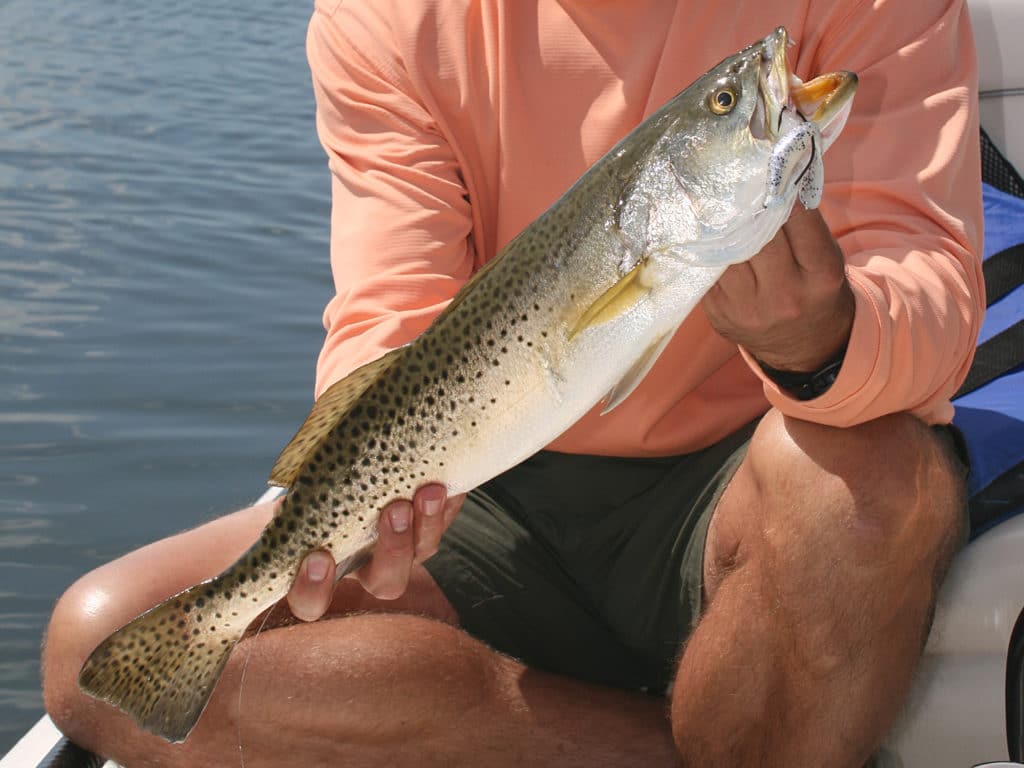
CHANNEL TACTICS
Slow-sinking and suspending twitchbaits, like Bomber’s Badonk-A-Donk SS and MirrOlure’s MirrOdine and MirrOminnow, are ideal for the channels. But a soft plastic jerkbait or shrimp rigged with a jig head and bounced slowly on the bottom is also very effective.

FISHING CREEKS AND BAYOUS
Slow motoring with an electric troller is best. Cast a weighted 3- to 4-inch swimbait or a curly tail on a ¼- to 3⁄8-ounce jig head along both edges before working the middle of the channel.

PROVEN FORMULA
Remember this formula: right temperature plus moving water plus forage equals fish. Then arms yourself with the right lures, dress in layers and go look for spots that combine the mentioned factors to catch your winter favorites





